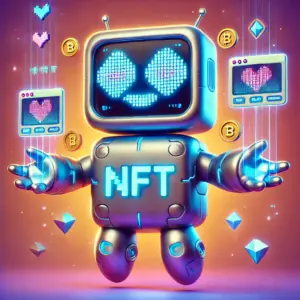The allure of NFTs – non-fungible tokens – has captured the imagination of artists, collectors, and investors alike. These unique digital assets represent ownership of virtual items, from digital artwork and music to game assets and even virtual real estate. However, the journey of creating and minting an NFT involves a spectrum of costs that extend beyond the initial minting fee. This article delves into the intricate landscape of NFT creation costs, offering a comprehensive breakdown of the different elements involved, their associated financial implications, and strategies for cost optimization.
Table of Contents:
Understanding the Components of NFT Creation Costs
Creating an NFT necessitates a multi-faceted approach, encompassing various cost components that contribute to the overall expenditure. These components can be broadly categorized as follows:
1. Preparation Costs
The genesis of an NFT begins with its conceptualization and execution. This phase involves costs related to the asset itself, be it a digital artwork, a piece of music, a 3D model, or any other form of digital content. This initial stage can be broken down into:
- Asset Creation: This encompasses the cost of developing or obtaining the digital asset you intend to mint as an NFT. If you’re an artist, this may involve the cost of materials, software, or tools. If you’re acquiring an existing digital asset, its purchase price will be a significant cost factor.
- Design and Development: In some cases, you may require professional assistance to design or develop your digital asset. This cost can vary significantly depending on the complexity and intricacy of the asset and the expertise of the designers or developers involved.
2. Minting Costs
Minting an NFT represents the process of transforming your digital asset into a unique and verifiable token on a blockchain. This involves a transaction fee charged by the blockchain network, commonly known as “gas fees.” The gas fee fluctuates dynamically based on network congestion and demand. Blockchain platforms like Ethereum, Solana, and Flow each have their own gas fee structures and dynamics. Choosing the right blockchain platform can significantly influence your minting costs.
3. Platform Fees
Minting an NFT typically requires utilizing NFT marketplaces like OpenSea, Rarible, or Nifty Gateway. These platforms provide an infrastructure for creating, displaying, and selling your NFTs. They often levy transaction fees on both the minting and sale of NFTs, which can vary across platforms. Understanding these platform fees is essential for budgeting your NFT creation costs.
4. Marketing and Promotion Costs
Once your NFT is minted, promoting it to attract potential buyers becomes crucial. This phase involves various marketing strategies that can include:
- Social Media Marketing: Leveraging social media platforms like Twitter, Instagram, and Discord to build a community and generate awareness around your NFT.
- Content Marketing: Creating articles, blog posts, or videos to showcase your NFT’s unique features and value proposition.
- Paid Advertising: Utilizing targeted advertising campaigns on various platforms to reach a wider audience and increase visibility.
- Community Building: Engaging with NFT enthusiasts and fostering a community around your NFT project through Discord servers or Telegram groups.
5. Storage and Security Costs
After minting, your NFT requires storage to maintain its integrity and ensure its accessibility. While blockchain technology secures the NFT’s ownership and authenticity, the actual digital asset data may need to be stored off-chain. This can involve storage costs associated with platforms like IPFS (InterPlanetary File System) or Arweave, which offer decentralized and permanent data storage solutions. Additionally, securing your wallet and protecting your private keys is crucial to prevent unauthorized access to your NFTs. This may involve investing in hardware wallets for enhanced security.
Optimizing NFT Creation Costs
While creating an NFT can involve considerable costs, several cost-optimization strategies can help mitigate these expenses. These strategies include:
1. Choosing the Right Blockchain
Blockchain networks have varying gas fee structures and levels of activity. While Ethereum remains the most popular blockchain for NFTs, its high gas fees can be a deterrent. Exploring alternative blockchains like Solana, Flow, or Polygon, which offer lower gas fees and faster transaction speeds, can significantly reduce minting costs.
2. Selecting the Optimal NFT Marketplace
NFT marketplaces have different fee structures and features. Researching and comparing fees charged by popular platforms like OpenSea, Rarible, and Nifty Gateway can help identify the most cost-effective option for your NFT project.
3. Strategic Marketing and Promotion
Investing in targeted and cost-effective marketing strategies can maximize your NFT’s reach and generate potential buyers. Utilizing organic social media marketing, creating engaging content, and focusing on community building can yield significant results without breaking the bank. Experimenting with different marketing channels to identify the most effective ones for your specific NFT can help streamline marketing costs.
4. Exploring Free or Low-Cost Tools
Numerous free or low-cost tools can assist in NFT creation. Utilizing these tools can significantly reduce the costs associated with asset creation, design, and marketing. For example, Canva and Adobe Spark offer free design tools for creating visuals, while platforms like IPFS provide free decentralized file storage options.
5. Leveraging Community Resources
Connecting with NFT communities and utilizing their resources can be invaluable. Participating in online forums, joining Discord servers, and engaging with fellow NFT creators can provide insights, support, and potential collaborations that can lower costs and streamline the NFT creation process.
Calculating the Costs: A Real-World Example
To better understand the financial implications of NFT creation, let’s illustrate with a hypothetical example. Consider an artist creating a digital artwork as an NFT:
- Asset Creation: Assuming the artwork took 10 hours to create and the artist’s hourly rate is $50, the asset creation cost would be $500.
- Minting Costs: Choosing Ethereum for minting, the gas fee might fluctuate between $50-$150 depending on network congestion.
- Platform Fees: OpenSea charges a 2.5% transaction fee on successful sales, but they do not charge for minting.
- Marketing and Promotion: A modest budget of $100 could be allocated for social media advertising and content creation.
- Storage Costs: IPFS provides free decentralized storage, so the storage cost would be negligible.
In this scenario, the total cost of creating the NFT would range from $650 to $750. However, remember that these costs are estimates, and actual expenses can vary significantly depending on the complexity of the asset, the choice of blockchain and marketplace, and marketing strategies employed.
Conclusion
Creating an NFT involves a range of costs that are interconnected and influence the financial feasibility of entering the NFT space. Understanding these costs, from asset creation to minting fees, marketing, and storage, is crucial for responsible budgeting and project planning. By implementing cost-optimization strategies like choosing the right blockchain and marketplace, leveraging free tools, and engaging with the NFT community, creators can reduce expenses and increase their chances of success in this burgeoning digital art market.
Frequently Asked Questions (FAQs)
Here are some frequently asked questions about NFT creation costs:
1. Are there any free ways to mint NFTs?
Yes, some platforms offer free minting options. However, these platforms often use different blockchains with potentially higher gas fees, or they may have limitations on the number of NFTs you can mint for free. It’s important to research and compare different platforms to find the most suitable option.
2. Can I mint an NFT without paying gas fees?
No, minting an NFT requires gas fees to process the transaction on the blockchain. There are no free ways to avoid gas fees entirely.
3. What are the best NFT marketplaces for minting?
The best marketplace depends on your specific needs and priorities. Some popular and reputable platforms include OpenSea, Rarible, Nifty Gateway, and Foundation. Consider factors like platform fees, community size, and ease of use when choosing the right marketplace.
4. How can I reduce gas fees when minting an NFT?
You can try minting your NFT during off-peak hours or exploring alternative blockchains that offer lower gas fees, such as Solana, Flow, or Polygon.
5. What factors influence the cost of creating an NFT?
Several factors impact the cost, including the complexity of the asset, the chosen blockchain, the utilized marketplace, the marketing budget, and storage options.
6. Is it worth investing in professional help for NFT creation?
If you lack technical expertise or specific design skills, investing in professional assistance can save you time, effort, and potential financial losses. Professional designers and developers can help ensure your NFT is visually appealing and functionally robust. However, carefully assess your budget and project requirements to determine if investing in professional help aligns with your goals.
7. Can I sell an NFT for more than I spent creating it?
Yes, the NFT market has seen instances of NFTs selling for considerably higher prices than their creation costs. However, it’s important to remember that the NFT market is highly volatile, and there’s no guarantee of making a profit. Do thorough research and assess the market demand for your NFT before investing significant resources in its creation.






